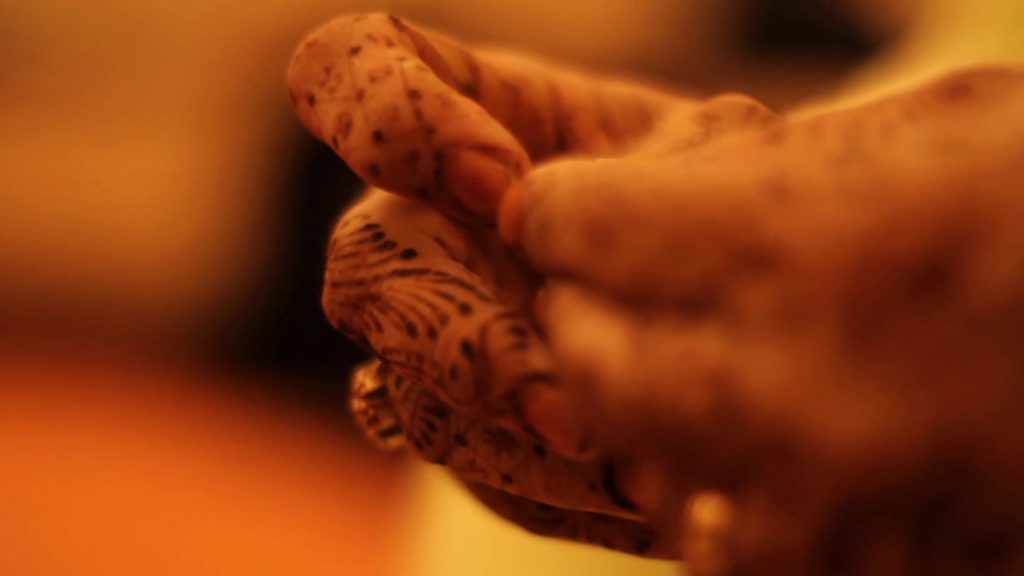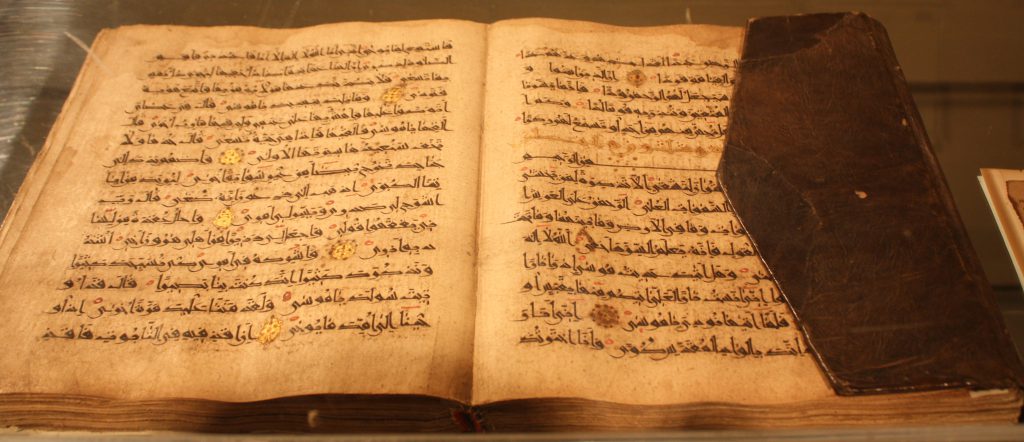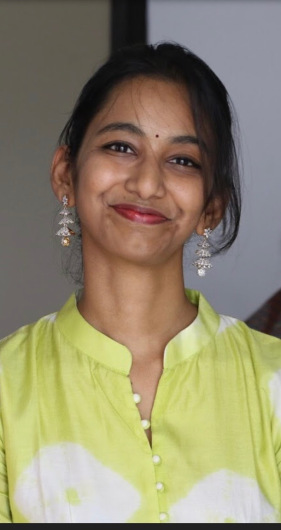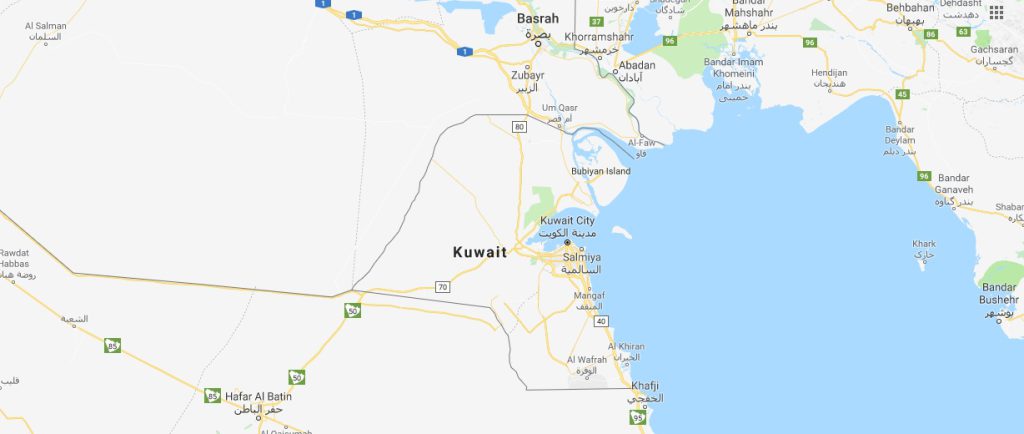मेरी अनुमति के बिना मेरे सबसे गुप्त अंगों को काटा गया

(This article was originally published in English on November 5, 2016. Read the English version here.) उम्र: 64 देश: संयुक्त राज्य अमेरिका महिला जननांग विकृति या FGM के खिलाफ खड़े होने का समय आ गया है। यह लंबे समय से बाकी है। यह तब भी सही नहीं था जब मेरी माँ इससे गुज़री, यह तब भी सही नहीं था जब मैं इससे गुज़री और यह तब भी सही नहीं था जब मैंने अपनी बेटी के साथ यह होने दिया (मेरे माता-पिता के दबाव में)। जिस दिन भारत में मेरे साथ एफजीएम किया गया था, मुझे उस दिन की याद है। मैं लगभग छह या सात साल की थी। मेरे भाई, जो मुझसे उम्र में बड़ा था, उसको एक दोस्त के घर पर खेलने के लिए दूर भेज दिया गया था एक महिला, जिसे मैंने पहले कभी नहीं देखा था, वह आयी और मुझे मेरे माता-पिता के बेडरूम में ले जाया गया जहां एफजीएम किया गया था। मुझे लगता है कि उस घटना और उस दिन की असहज स्मृति को मैंने दबा दिया है – बस उस महिला और मुझे नीचे लिटाए रखने वाली मेरी माँ की तस्वीर को छोड़कर। मुझे याद नहीं है कि खतना के पीछे का कौनसा कारण मुझे बताया गया था। लेकिन मुझे याद है कि मेरी अनुमति के बिना मेरे शरीर के सबसे गुप्त अंग के साथ जो किया गया था, उससे मैं बहुत नाराज़ थी। यह मेरे जिस्म पर अतिक्रमण था। सबसे अधिक, मुझे इस बात पर नाराजगी है कि जिस व्यक्ति पर मैंने उस छोटी उम्र में जीवन में सबसे अधिक भरोसा किया था, उनहोंने मेरे साथ ऐसा होने दिया। हो सकता है, इसीलिए, मेरा एक हिस्सा है जो मेरी माँ को माफ नहीं कर सकता है और मुझे आश्चर्य है कि मेरी बेटी ने मुझे उसी काम को करने के लिए माफ कर दिया है। एफजीएम को सही दिखाने के लिए इसे धर्म के लिबास में ढका जा रहा है। पर जल्द ही साहियो जैसे संगठन इस क्रूर प्रथा को बंद कर देंगे। जब तक सैयदना एफजीएम की निंदा नहीं करते हैं, और अपनी बात अमल नहीं करते हैं, तब तक मुझे खुद को दाउदी बोहरा कहने में शर्म आएगी।
Female Genital Cutting (FGC): Is it an Islamic Practice? (Part 2)

By Debangana Chatterjee Though often being referred to as an Islamic practice, Female Genital Cutting (FGC) precedes both Islam and Christianity. It is believed to have originated in the Pharaonic era of Egypt. Elizabeth Boyle, author of Female Genital Cutting: Cultural Conflict in the Global Community, mentions in the book that before the advent of Islam, Egyptians, who valued FGC (particularly infibulation), introduced a strong slave system and expanded it towards the adjacent geographic region. At the onset of Islam in the Egyptian controlled region, Islam asserted a stringent prohibition towards enslaving other Muslims. Hence, non-Muslim were continued to be used as slaves, and since FGC was done to these non-Muslim women slaves to increase their worth and value as slaves, FGC was by extension spread to other parts of Africa by the slave traders. This remains one of the driving factors behind the spread of FGC in Africa simultaneous to the rise of Islam. Despite FGC predating Islam, the myth of it being an Islamic practice persists due to the impressions of virginity and purity remaining closely associated with the religion’s values. There are ample reasons to challenge the unnecessary association of the practice with the Islamic culture. First, FGC was common among the Egyptian Coptic Christians and a number of Tanzanian Christian communities. In fact, FGC was also reportedly performed on Western women in the 1950s as a cure to nymphomania and depression according to L. Amede Obiora. Secondly, the practice is rife only among a limited number of Islamic practitioners of the world. Islam is the world’s second largest religion with approximately 1.6 billion followers of the religion consisting of 23.2 percent of the world population. On the other hand, there are around 200 million reported cases of FGC worldwide which includes non-Islamic people as well. Even if one takes these numbers as absolute, merely 12 percent (approx) of the entire Islamic population is affected by the practice. Thus, FGC does not necessarily qualify as an Islamic practice, considering most of the followers of the religion either nullify FGC or even remain oblivious to it. Third: the Holy Quran altogether stands in opposition to inflicting harm; going by that logic Islam cannot be supportive of FGC inflicting mental/physical harm of any sort onto women/girls. Despite the Prophet being explicit about sunna (tradition) on male genitals, FGC’s existence within Islam remains debatable. In many countries, Islamic traditions often remain debatable, including discussions on FGC. In the documentary The Cutting Tradition, an imam from the Harar region of Ethiopia is heard explaining how it already existed among various communities and the Prophet merely advised a sunna way of cutting where only the nicking of the clitoral prepuce is permitted. In the same documentary the Grand Mofti of Egypt, Fadilet Al-Mofti Ali Gomma repudiates any religious basis for FGM/C, though in 1994 a religious decree was issued in the country in favour of the practice stating it as an honourable deed for women. In fact, the decree, issued by one of Egypt’s prominent clerics Sheikh Gad el-Haqq, admittedly mentioned that FGC is not obligatory in Islam but should be followed due to the traditional rituals attached to it. Even in the Afar region of Ethiopia, religious leaders are seen invoking Islamic scripture and text to counter continuation of FGC among practicing community members. The practice came to South-East Asia in the 13th century, due to the advent of Islam in the region after the change in regime. The Shafi school of Sunni Islam in Indonesia and Malaysia considers FGC an Islamic practice, yet they are culturally influenced by the region where Yemen and Oman are situated, countries that have considerable FGC prevalence. At a time in the world when right-wing politics riles up with growing Islamophobia, it is important not to straightjacket Islam in order to avoid its unnecessary vilification and mindless demonization. Islam, as it grew, got entangled with cultural traditions in such a manner that it often looks inseparable. But a close and nuanced study of the matter opens it up for further scrutiny and leaves room for potential dialogic engagement with the communities practicing female genital cutting so that in time these communities will come to abandon it. Read Part 1 – What Islam says about Female Genital Cutting and how far are these texts invincible? More about Debangana Debangana is a doctoral scholar at the Centre for International Politics Organisation and Disarmament (CIPOD), Jawaharlal Nehru University. Through her research, she is trying to locate the existing Indian discourse surrounding the practices of FGM/C and Hijab into the frame of international politics. If you would like to connect with Debangana, you can reach her at debangana.1992@gmail.com.
Female Genital Mutilation/Cutting: Work of the devil?

By: Koen Van den BrandeAge: 56 Country: India I rarely speak of the devil. In Germany they have a saying: Du sollst den Teufel nicht an die Wand mahlenLiterally this translates to ‘Don’t paint a picture of the devil on the wall’. Loosely translated it means that you should not invite evil by talking about it. But maybe there are times we have a duty to alert others to the devil’s work. What I mean by that is not that anyone in particular is a devil but rather that maybe at times the devil has a hand in misleading people. My efforts to get to the bottom of the origins of the practice of ‘khatna’ – what the rest of the world calls ‘Female Genital Mutilation’ (FGM) – in the Suleimani community, recently led me to the inevitable conclusion that the devil has had a hand in twisting the words of the Prophet PBUH, to mean the opposite of what He was saying. My attention was drawn to some research carried out by learned members of the Muslim community. Let me present the facts to you so that you may come to your own conclusion. Early on in my own research I came across a Hadith – a reported saying of the Prophet – which was being quoted as evidence of tacit approval of this ancient practice, which predated Islam and may have been initiated in the distant past to subdue the sexual urges of female slaves. My discussions with members of the Suleimani community had made it clear that the Daim-ul-Islam is the rulebook to which many show an unquestioning allegiance. Of course such blind faith can have dire consequences. The Daim-ul-Islam does indeed refer to the Hadith in question. Following is an extract from a paper published on www.alislam.org, with the title ‘Female circumcision and its standing in Islamic law’. But it turns out this is not the full Hadith. In full, the Hadith seems to leave little doubt as to where the Prophet stood on this matter. The authors of the report quote from Al-Kafi, a respected Shiite book of traditions. Was the Prophet endorsing, encouraging or even mandating that women should be cut? Or was he signaling his disapproval and in the face of a long-established tradition, trying to limit the harm done to women? Given what he says, is it correct to claim, as some do, that he should have forbidden it, if he really felt it was wrong? I will leave it to you to draw your own conclusion. For me these words of Mohammed, now in full view, are consistent with other issues where he championed the rights of women in the face of a culture which at that time saw no reason to do so. Who decided to shorten the hadith and to what end? And at which point did a woman who ‘used to circumcise women slaves’ become a woman who ‘used to circumcise girls’? There is a substantive difference is there not? Just as with the modern day suggestion that Mohammed condoned wife-beating, when in fact he counseled restraint and suggested several alternative ways of resolving marital disputes or the insistence by some on the validity of ‘triple talaq’ divorce, where in fact careful mediation over a period of time is prescribed, one can only conclude that the devil himself has repeatedly sought to undermine the Prophet’s cause as champion of the rights of women! Today we call this ‘fake news’ and we are learning day by day, how it is used to mislead those who believe without questioning. Witness how the young parents of our community are systematically fed disinformation, building on that same principle of blind faith. But blind faith in whom? I quote from the website www.islamqa.com. Search for the term ‘khatna’ and the following question is addressed, among others: This is how the scene is set: I wonder what a properly qualified medical practitioner would make of some of the advice given. Need I say more ? How do we tackle such blatant attempts at misleading parents of young girls? Surely the best strategy must be to focus on facts and truth. So I am attempting to find a consensus across the Suleimani community around the following statement. “I as a member of the Suleimani Jamaat, in the interest of young parents and their girls, want to reflect what I believe to be the truth about the practice of khatna. Fact is … It is a tradition which predates Islam It is not mentioned in the Quran at all It is not practiced by all muslims It has been declared a crime in several Muslim majority countries It is considered a health hazard by the World Health Organization It is considered a crime against a child by the United Nations Truth is, in my humble opinion, that the Prophet Mohammed PBUH frowned upon this practice and sought to prevent harm from being done to women. I believe that these facts should be endorsed by our leadership and communicated to all of the Jamaat ‘s young parents. The Daim-ul-islam states that ‘khatna’ is not obligatory and that it should not be performed before a girl is 7-years-old. I believe that it would be in line with this rule to recommend to parents that any decision to proceed with this practice should be postponed until the age of consent. And in line with the Prophet’s guidance, at a time when it was a more common practice, I believe that when and if it is performed, it must be done symbolically only and cause no harm.” I hope you can join the effort by endorsing this statement. And if you cannot, I invite you to propose an alternative. At least let’s start by banning the use of http://www.isllamqa.com Let us work together to undo the work of the devil. This blog is the third in a three-part series that describes the practice of FGC within the Suleimani Bohra community.
What Islam says about Female Genital Cutting and how far are these texts invincible? (Part 1)

By Debangana Chatterjee A journey through religious texts helps us to validate or disprove the claims that there are religious justifications for traditional cultural practices. A similar logic applies to the claims that Female Genital Cutting (FGC) is an Islamic practice. The Holy Quran and the hadiths, evolving from the deeds of the Prophet Muhammad, form the basis of Sharia or the Islamic law. Whereas the Quranic scriptures are unquestionable, hadiths require authentication as they are the dynamic source of evolving Islamic practices. Hadiths are the Prophet’s verbal instructions which were documented by various narrators after the Prophet’s death. The actual narration of the text is called the matn and the insad contains the trail of narrators to support the authentic transmission of Prophet’s instructions over generations. Hadiths can be classified as either mutawatir or ahad. Mutawatir hadiths are substantiated and backed up by multiple reporters documenting his guidelines and thus, is adequately acknowledged within the Islamic circle. Praying namaz, donating, fasting and going for Hajj are few of the mutawatir hadiths which are considered fully authentic. On the contrary, although a few ahad hadiths are thought to permit a limited form of female genital cutting, they are deficient of authenticity borne through insad. According to a Baihaqi hadith, circumcision ennobles women. But many suggest it to be advisory rather than obligatory. One of the Bukhari Sharif hadiths considers circumcision as one of the acts of fitra (human acts inspired by God) like the removal of pubic hair, trimming the moustache, removing armpit hair and shortening nails. In Islam there has been much controversy whether fitra is binding. One Jami at-Trimidhi hadith suggests that there must be an essential bath after sexual intercourse between the two circumcised genitals of opposite gender. Though the supporters here take circumcision as a prerequisite to sexual intercourse and hence to marriage, the commandment of the hadith lies at the fact of taking a shower after sexual intercourse where circumcision may be spoken of as a natural presupposition. Written in Arabic, this hadith may have been toldto a community that was culturally inclined towards FGC at the time it was said. Hadiths by Abu Dawud, Al-Tabrani and Al-Khatib al-Baghdad seem to suggest conducting a plain cut of the clitoral prepuce, as according to them it beautifies a woman’s face and makes her even more desirable to her husband. Primarily even if the hadith indicates FGC, it eliminates the severe forms of it such as infibulation and only promotes the least severe form. Other interpretations of this hadith suggest that rather than taking it as the Prophet’s order, one may read this hadith as suggesting it is merely a desirable option. In contradiction, a hadith reported by Abu Sa’id al-Khudri and documented by Ibn Majah and Al-Daraqutni with an authenticated line of insad seems to unequivocally reject any practice amounting to harm. In Shia Islam, taharat (purity) concerning the notions of hygiene, cleanliness and purity is sometimes put forward to justify FGC. It is believed that due to the clitoral unhooding the excess building up of smegma is addressed. Yet, effective measures of washing and cleanliness are more than adequate to address this issue. Removal of healthy tissues for it does not seem to be credible enough. In India, Dawoodi Bohras, the largest Bohra sect belonging to the Tayyibi Ism’aili branch of Shia Islam, who practice khatna, consider the Da’i al-Mutlaq, also known as Da’i, to hold an authoritative, infallible status in the community. As the Da’i considers Daim-ul-Islam as the binding religious text for the Bohras, diktats of the text are taken as truth by devout community members. In this text, the Prophet is believed to advise for a simple cut of a woman’s clitoral skin as this, according to certain translations of the text, assigns chastity to a woman and makes her more ‘beloved by their husbands’. Though supporters of FGC cite this as the reason for the continuation of khatna, scholars have shown that da’is have never been as invincible historically, as has occurred in the recent past. In fact, changes in the provision that khatna is required, would add dynamism to the religion. Islam as a whole neither complies with the practice nor endorses FGC. Despite repeated invocation of religious references as a justification for FGC, considering the myriad number of Islamic texts, the grounds for such justification hold little or almost no merit. Read Part 2 – Female Genital Cutting (FGC): Is it an Islamic Practice? More about Debangana Debangana is a doctoral scholar at the Centre for International Politics Organisation and Disarmament (CIPOD), Jawaharlal Nehru University. Through her research, she is trying to locate the existing Indian discourse surrounding the practices of FGM/C and Hijab into the frame of international politics. If you would like to connect with Debangana, you can reach her at debangana.1992@gmail.com.
White House Press Release Falsely links Gender Violence (and FGC) to Foreign Nationals

By Geethika Kodukula (Disclaimer: Although they graciously accepted it, the views in this post are my own and do not necessarily reflect those of Sahiyo or its founders. I am not myself an immigrant, Muslim, or an FGC survivor.) In January, the White House put out a press release wherein they mentioned a Department of Justice report about the Entry of Foreign-Born Terrorists into the United States and the “connection” to Gender-Based Violence. The press release noted more than 20 “statistics” and names of people who have either been convicted of terrorist activities or conspiring against the US between 2001 and 2016. All of the cited examples were of people keeping Islamic faith, children of visa lottery recipients, or children of foreign-born nationals. Nowhere in this press release is there mention of the multitude of hate-crimes against people of color in 2017 or the half a dozen shootings in the month of January that are more pressing and real concerns for national security. As a statistician, I can tell you with certainty that numbers do not mean anything if you do not have a baseline to compare against. For example: let’s examine statistics about crime from the FBI. In 2016, there were 6,121 hate crimes in the United States. However, before believing that we must leave the country because it is unsafe, it is important to note that only 11.6% of the total number of jurisdictions monitoring hate crimes reported any incident. In other words, 88.4% of jurisdictions had no incident report of a hate crime whatsoever. Cherry picking numbers and placing them onto an entire group does not make the statistical interpretation valid. According to the White House Press Release, two ‘threats’ immigrants bring into America are gender-violence and crime. Let me rephrase that – the current administration, led by this man, who hired people like Rob Porter and David Sorensen who touted their professional prowesses in response to them giving their wives black-eyes, is worried about immigrants bringing gender violence into the country. Gender Violence is pervasive across the world. “Global estimates by the World Health Organization indicate that about 1 in 3 women worldwide has experienced violence in their lifetime.” [WHO | Violence against women] Factually, there is no continent on which there hasn’t been some form of sexual harassment or assault, including Antarctica. If you want some stats on the issue, go to UNWomen. I could (and desperately want to) pick apart each of the statistics provided in the White House statement intended to make us clutch our pearls and shriek at the sight of a ‘foreign-national’. However, I will resist the urge and stick to the point that made me decide to write this piece. From the White House statement: “According to a 2016 report by the Center for Disease Control and Prevention (CDC), the number of women and girls at risk of undergoing female genital mutilation (FGM) was three times higher in 2012 compared to 1990. The CDC report states that the increase was entirely a result of the rapid growth in the number of immigrants from FGM practicing countries.” One concern/question that immediately comes to mind: what was their methodology to predict that increase? Let’s check the report: “For comparability of terminology with earlier analyses, those at risk consisted of the number who potentially underwent or would potentially undergo FGM/C in the future if the population of foreign-born women and girls and their children in the United States had the same rates of FGM/C as the countries in which the girls or their mothers had been born.” To put it in perspective, the statement assumes that if a country has, say, 20% prevalence of FGC, and we have 100 immigrants from that country, 20 of those immigrants are at risk for FGC/M. The inference is then that after people emigrate to the United States, they behave in the same manner as they would in the country from which they migrated. The study does not take into account assimilation of immigrants, a difference in socioeconomic status, nor that FGM/C is banned in the United States. The CDC study itself notes that ‘These differences would very likely result in reduced risk for FGM/C’. Whoever wrote this press statement did not read the entire CDC study, or they just choose to conveniently leave out that point. Alternatively, they must have thought that no one would read the actual CDC study in its entirety and instead the public would align with the narrative that we must all run from the scary foreign-man? FGC is a real public health problem prevalent around the world, including in the United States. We are all trying to understand, reason, and reduce its incidence. We would be rejoicing if as a shift from the norm, the statement had said, ‘We can not tolerate this practice anywhere; here on U.S. soil, or across the world. We will work towards grassroots education, de-stigmatizing, and progress in the elimination of FGC.’ The White House Press Release leaves me to wonder, is the U.S. still a champion of human rights across the world, or, are they okay as long as any violation that occurs is just not in their backyard? FGC has its origins rooted in the patriarchy and suppression of female sexuality. Expecting the Trump administration to understand the nuanced situation of harmful religious practices is almost pointless. It is a war and not a battle. However, I will be damned if I stand by and watch these false “champions of women’s safety and health” demonize people without caring about the implications of their statements. At this point, if a ‘foreign national’ pulls his ear three times before eating his lunch, it seems the White House will find a reason to make it an issue relating to economic/health/crime/gender-violence. The gender-violence statistics in the United States are staggering. For many of us, it is our day job to end it – day-in and day-out. Gender-violence, like many forms of violence, is about power. Don’t let
To each his own! A perspective on Female Genital Cutting by a Kuwaiti Bohra

By Anonymous Age: 29Country: Kuwait I was 7 years old when Khatna happened during my summer vacation to India. I am sure my mother must have looked for other avenues to have khatna done on me in Kuwait but unfortunately since Kuwait is such a strict Muslim country wherein even an abortion is prohibited, she had to take me to India. The mid wife convinced me that she was trying to remove a (non-existent) worm from my privates, that too in a non-medical set up. I remember her surgical toys, how she just laid me on the floor and boom I spat out a loud cry!! Funny part, there was a boy my age there who was also getting a circumcision. Good for his penis! I remember what happened but I never knew the actual reason for it until I went to college and met another well-read Bohra girl who then enlightened me that what had happened to me was not something normal, it was not right! I really didn’t understand what she meant, but then I researched and read about all types of FGM being performed and I realized what happened to me was Type 1. I even asked my other Muslim friends if they were circumcised. Of course the answer was, “What the hell are you even talking about?” I didn’t know how to confront my parents about it because all my life I just thought khatna must be essential just like a vaccination of some kind. When I did confront them, it was so upsetting for me to learn that they didn’t even feel sorry for what they did to me. They simply said it was a tradition that Bohras have been following for years and if I want, I have the will to not continue this for my daughters. Simple! I am enraged even as I write this. I had to accept my fate and move on but I did make them realize that what they did was wrong and unnecessary. I am 29 today and no, I don’t face any of the issues that have been discussed on this forum like being depressed, traumatized, or broken. And no, I don’t face any issues with an orgasm or stimulation. But again, that does not mean that I support this nonsense. The simple pleasures of life that god has bestowed upon us, why should anyone take that away from us? I did visit a gynecologist recently and I had to ask her to check if my clitoris looks normal. Her response was “It’s almost there.” From what I understand, Type 1 FGM is where they remove the clitoral hood. My doctor said that my hood is very much there, but a snip on my clit was visible enough to know that something was wrong. She seemed confused and that’s when I had to explain to her that Khatna happens in India too. She was shocked as it was new information for her. She was from Chennai; little does she know it’s probably being practiced there too. Whenever I end up in a discussion about Khatna with my Bohra friends who have cut their daughters, they have no space for a logical debate. There are also parents who are aware of this wrongdoing and who have decided not to practice this on their daughters, but they are not involved in any sort of a debate with others. Which is great and it’s the best way to deal with it. To each his own! I have been following Sahiyo on Twitter and I do read the chain of ongoing debates. And in between I come across arguments by Bohra doctors who support this illegitimate act with on the grounds of equal rights between men and women for circumcision. It made no sense to me, but one male doctor said that if men can be circumcised for medical reasons, women in our community have the rights to do so as well for hygienic reasons. Really? I still have had a UTI and Candidiasis even after being circumcised! To that doctor: it’s great that you care about us so much, but if that’s the case, then ask us for our consent on this matter. We have the right to say yes or no just like in our marriages. Educate us about khatna in the madrasas. Teach us the medical benefits of this act. Enlighten us but only when we have hit puberty and not when we are naïve and gullible. Allow us to do our own research and decide for ourselves whether we want to get snipped or not.
શા માટે દાઉદી બોહરા ખતના પ્રથા અથવા ફીમેલ જેનિટલ કટિંગને અપનાવે છે?

છોકરીઓ માટેની ખતના પ્રથા શા માટે અપનાવવા આવે છે? દાઉદી બોહરા સમાજ સદીઓથી જાહેરમાં વાતચીત કર્યા વિના છૂપી રીતે બૈરાનીખતનાપ્રથા અપનાવી રહી છે, જે ફીમેલ જેનિટલ કટિંગ (એફ.જી.સી.) તરીકે પણ જાણીતી છે. ફક્ત પાછલા એક વર્ષથી, બોહરા આગેવાનો બોલી રહ્યાં છે કે શા માટે તેઓ સાત વર્ષની છોકરીના ક્લિટોરલ હૂડ ને કાપવાની પ્રથા અપનાવે છે. (બૈરાઓને સેક્સ્યૂઅલ આનંદનો અનુભવ કરવામાં મદદરૂપ થતા યોનિ અને મૂત્રમાર્ગ ની ઉપર આવેલ સંવેદનશીલ નસોવાળા ચામડીના બટન જેવા બંડલને ક્લિટોરિસ કહે છે અને ક્લિટોરિસને નુક્શાન થતું અટકાવવા તેના પરના આવરણને ક્લિટોરલ હૂડ કહે છે.) જુન 2016માં, સયૈદના મુફદ્દલ સૈફુદિને એક પ્રેસ સ્ટેટમેન્ટ આપ્યું હતુ જેમાં તેમણે ખતનાને “ધાર્મિક શુદ્ધતા”ના કાર્ય તરીકે જણાવી છે. જે,પાછલા વર્ષે સહિયો સાથેની એક અંગત વાતચીતમાંસમાજના એક વરિષ્ઠ પ્રવક્તાએ આપેલા સ્ટેટમેન્ટ જેવું છે, તેમણે દાવો કર્યો હતો કે દાઈમ અલ ઈસ્લામ (10મી સદીનું ન્યાયશાસ્ત્રનું પુસ્તક) અનુસાર બૈરા અને મરદનાખતના પાછળનું મુખ્ય કારણ ફક્ત શારિરીક જ નહિં પરંતુ, “આધ્યાત્મિક” અને “ધાર્મિક” સ્વચ્છતા અથવા તહારત પણ છે. ત્યારબાદ ફેબ્રુઆરી 2017માં, સમાજના એક વરિષ્ઠ પ્રવક્તાએ ધી હિન્દુસમાચારપત્રને એક અનામી મુલાકાત આપી હતી, જેમાં ફરી દાઈમ અલ ઈસ્લામ ની વાત કરી હતી. તે સિવાય, આ વખતે અનામી પ્રવક્તાએ જણાવ્યું હતુ કે ખતના “બૈરાના ચહેરા પરના તેજમાં અને તેણીના મરદ સાથેના સેક્સ્યૂઅલ સુખમાં વધારો કરવાનું” કાર્ય કરે છે. હવે, જ્યારથી અમેરિકામાં ત્રણ બોહરાઓની એફ.જી.સી.ના આરોપ હેઠળ ધરપકડ થઈ ત્યારથી કેટલાક બોહરા બૈરાઓ જે ખતનાનું સમર્થન કરે છે તેમણે આ પ્રથાના બચાવમાં સોસિયલ મીડિયાનો સહારો લીધો છે. આ બધાબૈરાઓ દાવો કરે છે કે ખતનાસેક્સ્યૂઅલ ઉત્તેજના માટે અપનાવામાં આવે છે અને તે “વૈજ્ઞાનિક” અને “તબીબી” રીતે લાભદાયક છે કારણ કે તે “પશ્ચિમ દેશોમાં કરવામાં આવતી ક્લિટોરલ અનહૂડિંગ પ્રક્રિયા” જેવી જ છે. તેમાના કેટલાક બૈરાઓ એમ પણ દાવો કરે છે કે ખતનાજનનેન્દ્રિય (જેનિટલ) સ્વચ્છતા માટે અપનાવામાં આવે છે. વધારે પડતા બોહરા બૈરાઓએ એક પેઢીથી બીજી પેઢીને ખતના પ્રથા આપતીવખતે, હજી સુધી આ રીતે તેનું પારંપરિક વર્ણન કર્યું નથી. પ્રોફેસર રેહાના ઘડિયાલીએ 1991માં, ઓલ ફોર ઈઝ્ઝત નામના એક આર્ટિકલમાં આશરે 50 બોહરા બૈરાઓના ઈન્ટરવ્યૂ લીધા હતા અને તેમાં ખતના માટેના સામાન્ય કારણો આ મુજબ જોવા મળ્યા હતા. ક) તે એક ધાર્મિક ફરજ છે. ખ) તે એક પરંપરા છે અને ગ) તે છોકરીની સેક્સયુઆલિટીને કાબુમાંરાખવા માટેઅપનાવામાં આવે છે. ત્યારથી, કેટલાક સ્વતંત્ર સંશોધનકર્તા, કાર્યકર્તાઓ અને ફિલ્મ નિર્માતાઓને બોહરા બૈરાઓ સાથેની તેમની અસંખ્ય વાતચીતો દરમિયાન તેવા જ કારણો જોવા મળ્યા. બોહરા સમાજના મોટા ભાગના લોકોએ સતત દાવો કર્યો છે કે તેઓ તેમની છોકરીઓનું ખતના, તેમની સેક્સયુઅલ ઈચ્છાઓને કાબુમાં રાખવા અથવા તો ચૂપચાપ ધાર્મિક પરંપરાને અનુસરવા માટે અપનાવે છે. ઘણા બોહરા લોકો તો ક્લિટોરિસને “હરામ ની બોટી” અથવા પાપી માંસના ટુકડા તરીકે બતાવે છે. સહિયોએ કરેલા 385 બોહરા બૈરાઓના રીસર્ચમાં પણ તેવા જ કારણો જોવા મળ્યા હતા. વધારે પડતા જવાબ આપવાવાળાઓએ દાવો કર્યો કે ખતના પ્રથાને પારંપરિક રીતે અથવા સેક્સયુઅલ ઈચ્છાઓને કાબુમાં કરવા માટે અપનાવામાં આવે છે, જ્યારે બહું ઓછાબૈરાઓએ “સ્વચ્છતા”, “તબીબી લાભ” અથવા “જાતીય સુખમાં વધારા”ને ખતના પ્રથાના કારણો બતાવ્યા હતા. 2012 માં ફિલ્મ નિર્માતા પ્રિયા ગોસ્વામિ, જ્યારે તેણીની ડૉક્યુમેન્ટરી પિંચ ઓફ સ્કિન નું રીસર્ચ કરી રહી હતી ત્યારે બોહરા ધાર્મિક સંસ્થાની એક મહિલા શિક્ષકે તો તેણીને સ્પષ્ટ રીતે જણાવ્યું હતુ કે ખતના પ્રથા પાછળનું મુખ્ય કારણછોકરીઓની સેક્સયુઅલ ઉત્તેજનાઓને કાબુમાં કરવાનો છે જેથી, તેણી શાદી પહેલાં અથવા પછી અન્ય કોઈ વ્યક્તિ સાથે સેક્સ્યૂઅલ સંબંધો ના રાખે. તો, શા માટે આજકાલના ઓનલાઈન ખતનાવિરોધીઓ તેની ઉલટી હકીકત આપીરહ્યાં છે અને દાવો કરી રહ્યાં છે કે બૈરાનુંખતના તેણીના સેક્સ્યૂઅલ સુખમાં વધારો કરવા માટે અપનાવામાં આવે છે? ખતના પ્રથા પાછળનું સાચુ કારણ શું છે? આ બાબતને સમજવા ચાલો આપણે, બૈરાના ખતના વિષે ઈસ્લામિક પુસ્તક શું કહે છે તે જોઈએ. ખાસ કરીને ઈસ્લામના શફી, હનબલી અને હનફિની કેટલીક ખાસ હદીથો છે, જેમાં ખતનાને સ્વીકાર્ય, ઈજ્જતવાળુ અથવા તો એક સુન્નત (સલાહભર્યું) તરીકે બતાવી છે. વિશ્વના ઘણા ઈસ્લામિક વિદ્વાનો વર્ષોથી આ હદીથની સચ્ચાઈ પર પ્રશ્નો ઉઠાવી રહ્યા છે. પરંતુ, આપણે તેને સાચુ માનીએ તો પણ, આ હદીથ એ મુખ્ય સચ્ચાઈને પાકી કરે છે કે પેગંબર મહમ્મદના સમયમાં પણ અરેબિયન પ્રદેશોમાં પહેલાંથી જ ખતના પ્રથા ચાલુ હતી, ખતનાઈસ્લામમાં દાખલ કરેલી કોઈ નવી ધાર્મિક પ્રથા નથી. એક હદીથ, સુનાન અબુ દાઉદ પુસ્તક 41, જેમાં વારંવાર સુનાન અબુ દાઉદની વાત કરવામાં આવી છે. તેમા નીચેની એક ખાસ બાબત સમાવિષ્ટ છે : “ઉમ્મ અતિય્યાહ અલ-અન્સારિયા માંથી: એક સ્ત્રી મદિનામાં ખતના કરતી હતી ત્યારે પેગંબરે (પી.બી.યુ.એચ.) તેણીને કહ્યું હતુ કે વધારે કાપીશ નહિં કારણ કે તે બૈરા માટે વધારે સારૂં હોય છે અને મરદ ને વધારેગમે છે.” પેગંબર, સ્ત્રીને વધારે કાપવા અંગે સાવચેત કરે છે તે ઘટનાનુંઅલગ-અલગ વિદ્વાનોએ અલગ-અલગ રીતે અર્થ અને ભાષાંતર કર્યું છે. અમુક વિદ્વાનોએ તેનું ભાષાંતર એમ કર્યું છે કે “વધારે કાપશો નહિં કારણ કે તે બૈરાઓના સેક્સ્યૂઅલસુખ માટે છે અને મરદ દ્વારા તે વધારે પસંદ કરવામાં આવે છે”, જ્યારે અન્ય વિદ્વાનોએ તેનું ભાષાંતર એમ કર્યું છે કે “…તે ચહેરાના સૌંદર્યનું કારણ છે અને મરદ માટે તે વધુ આનંદદાયક છે.” ધી પિલ્લર્સ ઓફ ઈસ્લામ (દાઈમ અલ-ઈસ્લામનું ઈસ્માઈલ પુનાવાલાએ કરેલુ અંગ્રેજી ભાષાંતર) ના વોલ્યુમ 1ના પેજ નં. 154 પર એક આવા જ વાક્યને એ રીતે ભાષાંતરીત કરવામાં આવ્યું છે કે “હે બૈરાઓ, જ્યારે તમે તમારી દીકરીઓનું ખતના કરો ત્યારે થોડો ભાગ છોડી દો (લેબિઆ અથવા ક્લિટોરિસનો ભાગ), તે તેણીના શુદ્ધ ચરિત્રનેબતાવશે અને તે બૈરાઓ તેમના મરદોને વધારે વહાલા લાગશે.” ઉપર બતાવેલ ધી હિન્દુ સમાચાર પત્રના એક ઈન્ટરવ્યૂમાં સમાજના એક પ્રવક્તાએ તેનું આવુ જ કંઈ ભાષાંતર કર્યું હતુ કે “બૈરાના ચહેરા પરના તેજમાં અને તેણીના મરદ સાથેના સેક્સ્યૂઅલ સુખમાં વધારો કરે છે”. (ઈટાલિક્સમાં આપેલ ભાગ ઉમેરવામાં આવ્યો છે.) હું કોઈ અરેબિક વિદ્વાન નથી પરંતુ, આ અલગ-અલગ ભાષાંતર પરથી એ સ્પષ્ટ છે કે અલગ-અલગ અરેબિક અને ઈસ્લામિક વિદ્વાનોએ આ સંદેશનું થોડા તફાવત અને વિરોધાભાસ સાથે એક સરખો અર્થ કર્યો છે. અમુક લોકો તેને બૈરાના ચહેરાના “તેજ” અથવા “સૌંદર્ય” માં (જે તેણીના જાતિય સંતોષનો સંદર્ભ છે, અક્ષરશઃ તેજ નહિં) વધારો કરવાના રૂપે ભાષાંતરીત કર્યું છે, તોઅન્ય લોકોએ તેને બૈરા માટે “વધારે સારૂં” અથવા “શુદ્ધ” (જે તેણીની જાતિય શુદ્ધતાના સંદર્ભમાં હોય શકે છે) રૂપે ભાષાંતરીત કર્યું છે. બધા મુસ્લિમો સહમત થશે કે જુની ઈસ્લામિક અરેબિકના શબ્દો વારંવાર અચોક્કસ અથવા ઘણા બધા અર્થોવાળા હોવાના કારણે તેને સમજવી સરળ નથી. પરંતુ, આ અચોક્કસતા આપણને એ સમજવામાં મદદરૂપ થઈ શકે છે કે, શા માટે બોહરા બૈરાની ઘણી પેઢીઓ માને છે કે ખતના બૈરાઓની સેક્સ્યૂઅલ ઈચ્છાને કાબુમાં કરવા માટે અપનાવામાં આવે છે અને શા માટે અન્ય બોહરા આ જ શબ્દોનો ઉપયોગ, એવો દાવો કરવા માટે કરી શકે છે કે ખતના
FGC Articles & Research in Other Countries
FGC in Asia: Female Genital Mutilation and Cutting in Asia Remain a Neglected Problem FGC in Asia and the Middle East Map Following our report, Facebook removes ‘Islamic Female Circumcision’ page promoting FGM Report on Female Genital Mutilation in Dagestan Sparks Controversy in Russia Factbox: The hidden cut: female genital mutilation in Asia UNESCAP: Harmful Traditional Practices in Three Countries of South Asia: culture, human rights and violence against women Courageous Alumna Speaks Out for Maldivian Women A Truly Global Effort is Needed to Eradicate FGM by 2030 Activist push for end to female genital mutilation Southeast Asia’s Hidden Female Genital Mutilation Challenge Asia Network to End Female Genital Mutilation/Cutting Consultation Report FGC in Australia: Women Speak Out on Female Genital Mutilation in Australia Genital mutilation convictions overturned after new evidence showing victims remain intact High Court to hear appeal on female genital mutilation and prosecutors’ push for retrial High Court upholds NSW genital mutilation convictions FGC in Canada: Canada lifts silence on FGM It’s Time for Canada To Play Its Part In Ending Female Genital Mutilation FGM, A Bitter Reality: Canada Needs To Do More Female Genital Mutilation in Canada and the Limits to Criminalization FGC in Colombia: Female genital mutilation in Colombia more common than assumed: UN ‘Cut with a blade’: Colombia indigenous groups discuss FGM FGC and COVID: Is the Pandemic Causing a Surge in Female Genital Mutilation FGC in Egypt: Egypt: The Law and FGM FGC and Islam: Islam and female circumcision Muslim doctors against female circumcision Debunking the Myth that Islam Requires Female Genital Circumcision Unmuting the Tabooed: FGM and Muslim Women’s Rights FGC in Indonesia: Increasing understanding of FGC in Indonesia: A field study by Islamic Relief Canada A Cutting Tradition Ending Female Genital Mutilation in Indonesia Ending FGM/C through Education and Community Engagement FGC in Iran: Ending FGM in Iran Needs International Support Female Genital Mutilation practiced in Iran, study reveals The Changing Paradigms of FGM/C Russian clinic in row over female genital cutting FGC in Iraq: Changing Perceptions to End a Harmful Tradition in Northern Iraq FGC in Malaysia: Review fatwa on female circumcision, Putrajaya urged DPM maintains that female circumcision is part of Malaysian culture Stop female circumcision, it has no medical benefit, says women’s groups Female Genital Cutting in Malaysia: A mixed-methods study Malyasia’s anti-FGM advocates: Leave our bodies alone Malaysian Public Attitudes and Perceptions towards Violence Against Women FGC in Oman: FGM Study in Oman Shows High Prevalence All Over The Country FGC in Pakistan: ‘Something has been taken away’: Pakistan’s well-kept FGM secret Lack of Data and Dialogue on Female Genital Mutilation in Pakistan Violated Hopes: My Struggle to Report on Female Genital Cutting in Pakistan I Asked Bohri Women About Their Practice Of Female Genital Cutting Or Female “Khatna” And Here’s What They Had To Say Why is it so difficult to talk about female genital cutting in Pakistan? Pak former minister to initiate drive against female khatna in India and Pakistan FGC in Philippines: Pag-Islam: An Exploratory Action Research on Female Genital Mutilation/Cutting Practices in the Bangsamoro Region, Philippines FGC in Russia: Female circumcision in Moscow clinic sparks ‘complete shock’ Russia Furore over FGM in mainly Muslim Dagestan Activists Call For Investigation Into Cases of Female Genital Mutilation, Saying It Would Be A First For Russia FGC in Saudi Arabia: New Study Showing Scale of FGM in Saudi Arabia Surprises Rights Activists FGC in Singapore: Local movement against female genital cutting turns to Ramadan bazaars to advocate its cause “A Tiny Cut”: Female Circumcision in South East Asia – An Overview of FGC in Malay community Female genital mutilation: The women fighting against Singapore’s hidden human rights violation Ultra-modern Singapore’s dark secret: female genital mutilation FGC in Sri Lanka: Sri Lank-Culture: Mothers Watch as Daughters are Circumcised Stop FGM Middle East: Sri Lank Harmful Traditional Practices in Three Countries of South Asia: culture, human rights, and violence against women Sri Lanka should Criminalise the practice of female genital cut, activist tells CESCR 61 Butter knife or sharp blade? Either way, FGM survivors in Sri Lanka want it to stop Female circumcision in Sri Lanka is ‘just a nick’, not mutilation: supporters Lawyers and activists urge Sri Lanka to ban genital cutting FGM/FGC Victims speak out FGM in Sri Lanka: It’s never ‘just a nick’ Sri Lankan Islamic Centre condemns ban on female circumcision as ‘affront’ Towards Understanding Female Genital Cutting in Sri Lanka FGC in the United Kingdom: UK Serious Crime Act 2015 Legislation – FGM Fact Sheet Female Genital Mutilation: Legislation, policy, and guidance Dawoodi Bohras in London Told to Stop Female Circumcision Calls For Compulsory School Teaching Of FGM UK Home Office Multi-agency statutory guidance on FGM The Female Genital Mutilation Survivors Teaches Victims How To Enjoy Sex Vagina surgery ‘sought by girls as young as nine’ Perception and barriers: reporting female genital mutilation
ખત્ના: એક માતાની વ્યથા અને એક પુત્રની દુષ્કર્મનો બદલો લેવા માટેની શોધ

લેખક : અનામી વય ૩૧ વર્ષ દેશ : અમેરિકા મારી માતા ખુદાના બંદા અને દ્રઢ ધાર્મિક માન્યતા વાળા છે. દાઉદી બોહરા સમુદાયના જન્મજાત ધર્મગુરુને માનવાવાળો, તેમણે કદી પણ તેનો હિસ્સો બની રહેવાથી ક્યારેય આનાકાની નથી કર્યાં. ઝળહળતા, રંગબેરંગી હિજરી કૅલેન્ડર આધારિત દરેક પ્રસંગોમાં તેઓ અચૂક હાજરી આપે છે. દાયકાઓથી, આ હિજરી કૅલેન્ડરે, દરગુજર કરી નહીં શકાય એવા અંધકારને સંતાડવાના અને કોમની ઝાકઝમાળ જાહોજલાલીનો દેખાવ કર્યે રાખ્યો છે. અમુક સમયથી હું કોમથી દૂર રહ્યો છું. અમારા કોમના અમુક હડહડતા જુથાણાઓ, ખાસ કરીને હિજરી કૅલેન્ડરમાં વાસ્તવિક સંબંધ ન હોય તેની વિરુદ્ધ મેં ઘણી વાર અવાજ ઉઠાવ્યો છે. લયલતુલ કદ્ર, રમઝાનની સૌથી મુબારક (પવિત્ર) રાત હવે હિજરી કૅલેન્ડર પર નાનકડું ટપકું બની ગઈ છે અને હિઝ હોલિનેસ, સૈયદના મુફઝ્ઝલ સૈફુદ્દીનનના જન્મદિન વડે ઢંકાઈ ગઈ છે, જે એ જ દિવસે આવે છે. મારી માતા મારી ટીકાઓને હળવાશથી નથી લેતાં અને હંમેશાં મને ખુલ્લું મન રાખવા જણાવે છે, એક મિનિટ માટે કોમમાં બનતી ઘટનાને ભૂલી જવા અને કોમની રુહાનિયત તથા બંદગીની તાકાત પર ધ્યાન કેન્દ્રિત કરવાનો મને અનુરોધ કરે છે. તેઓ હંમેશાં એક દુષ્કૃત્યની સામે પવિત્ર બની રહ્યાં છે અને કોમની વ્યાકુળતા સર્જનારી અનેક સચ્ચાઈઓની તેઓ ઉપેક્ષા કરે છે. પરંતુ બે મહિના અગાઉ, તેમણે ખત્નાની પ્રથા સામે પોતાનો આક્રોશ અને વિરોધ વ્યક્ત કર્યો ત્યારે હું ચોંકી ઊઠ્યો. આ વિનાશકારી અને જંગલી પ્રથા પર ‘સહિયો’એ વ્યાપક પ્રકાશ પાડ્યો છે. છોકરીઓ ધરાવતા તમામ પરિવારમાં અને ખત્નાને ખૂબ જ ગુપ્ત રાખતી કોમમાં હું ઊછર્યો હોવાથી, કેવળ ‘સહિયો’ મારફતે અને આ પ્રથાના લાંછનની અને તેમના જીવનમાં સર્જેલા દુખ:ની ચર્ચા કરવાની હિંમત દાખવનારી અનેક મહિલાઓએ લખેલા લેખો દ્વારા મને આ પ્રથા વિશે જાણવા મળ્યું હતું. પરંતુ મારી માતાએ પોતાના અનુભવો વિશે મને વાત કરી ત્યારે હું સખ્ત આઘાત પામ્યો. આ ખૂબ જ ધર્મનિષ્ઠ મહિલા, જેઓ પોતાનું સમગ્ર જીવન બોહરા કોમ માટે હિમાયતી બની રહ્યાં અને ચોક્કસ પ્રથાઓ પ્રત્યે દુર્લક્ષ સેવવા પોતાનાં સંતાનોને ઉત્તેજન આપતાં રહ્યાં હતાં, આ ખત્ના પ્રથાની ઉપેક્ષા કરવા માટે ક્યારેય તૈયાર નહોતાં. તેમણે તેમના ભાઈને અને મને એમ જણાવ્યું હતું કે જો તેમને દીકરી હોત તો, કદી પણ તેમની સાથે આવું થવા નહીં દેતે. સાત વર્ષની કુમળી વયે પોતાના અનુભવની પીડાજનક વિગત અમણે જણાવી, જ્યારે તેમને ભારતમાં એક પાડોશીના ઘરમાં અંધારાં ભોંયતળિયામાં લઈ જવાયાં હતાં. ત્યાર પછીથી તેમણે વેઠેલી વેદના, આક્રોશ અને લૈંગિક હતાશા તેમની અશ્રુભીની આંખોમાંથી સરી પડ્યા અને હું પણ મારી પોતાની આંખોમાં પણ અશ્રુને રોકી નહીં શક્યો. અન્ય મહિલાઓની આપવીતીઓ વાંચીને મેં અનુભવેલો આક્રોશ પરાકાષ્ઠાએ પહોંચ્યો જ્યારે મને એવી પ્રતીતિ થઈ કે મને આ દુનિયામાં લાવનારી મહિલાને કેટલી વેદના થઈ હશે. એ મહિલા જેને મારા સમગ્ર જીવનમાં હું પ્રેમ કરતો આવ્યો છું, તેણે આ કોમને માફ કરી અને તેનો હિસ્સો બની રહેવા માટે મને ઉત્તેજન આપ્યું, કારણકે તેમની પેઢી માટે કોમ જ સર્વસ્વ છે અને જમાત ખારીજ (નાત બહાર) બનવાનો વિચાર – પરિવાર અને મિત્રોથી અલગ થવાનો ડર – તમારી વેદના, હતાશા અને આક્રોશને ગળી જવાની અને પૂર્વસ્થિતિ (સ્ટેટ્સક્વો)ને સ્વીકારવાની તમને ફરજ પાડે છે. પણ હવે એ બધું વધુ સહન નહીં થાય. ખત્ના ફરતેની કદરૂપી ડાયન તેમજ બોહરા સમુદાયના અન્ય તમામ અન્યાયોનો સામનો કરવા માટેના હવે શક્તિશાળી વિકલ્પો ઉભા થયા છે. ત્રીસ વર્ષમાં પ્રથમ વખત કહેવાતા ધર્મગુરુઓ અને તેમના મળતિયાઓ ખૂબ ગભરાયા છે. ગુપ્તાંગ વિચ્છેદન (ખત્ના)ને મદદરૂપ થવા અને ઉત્તેજન આપવા બદલ, તેઓ અનિવાર્યપણે કાનૂની પ્રત્યાઘાતોનો સામનો કરશે એટલો જ ભય નથી, પરંતુ સાચો ડર મબલક નાણાકીય લાભો ગુમાવવાનો છે. રોકડ રકમથી ભરેલાં પરબીડિયાં, ઝિયાફતોમાં મળતા લાખો રૂપિયા/ડોલર, મકાનો, કારો અને પરંપરાગત હજારો નાના વહોરા ધંધાઓ જે એક જમાનામાં ઈજારાશાહી ધરાવતા હતા તેની પરનું સામાજીક અને નાણાકીય બન્ને નિયંત્રણ ગુમાવવા લાગ્યા છે. આવા વધુ અન્યાયો પ્રત્યે આંગળી ચિંધાશે ત્યારે જ વધુ વહોરાઓ જે દેખીતી રીતે હજારોની સંખ્યામાં છે, તેઓ રૂહાની (આધ્યાત્મિક) જ્ઞાન મેળવવા માટે અન્યત્ર જશે. આવી નાણાકીય ખોટ સાથે તેઓ કદી વૈભવશાળી જીવનશૈલીને ટકાવી નહીં શકે જેમાં તેઓ ઊછર્યા છે અને દોમ દોમ સાહયબી ભોગવી છે. પરંતુ ખાલી શબ્દો કરતા વાસ્તવિક કૃત્ય હંમેશા વધુ મોટા અવાજે પોકારે છે. પ્રથમ પગલું, જે આવશ્યક છે, તે પગલું આ પ્રથા વડે અસર પામેલી તમારા જીવનમાંની વિશેષ મહિલાને શોધવાનું છે, એ મહિલાની સાથે બેસો, તેની સાથે વાત કરો અને તેણે કેવી યાતના અનુભવી છે તેને સમજો. આવો પ્રચંડ ક્રોધ તમારામાં પણ પેદા થશે જે મેં અનુભવ્યો છે. અત્યારે પ્રચંડ ક્રોધ વ્યક્ત કરવાની જ આપણા માટે આવશ્યકતા રહે છે. આપણી પેઢીમાં એવા લોકોની આપણને જરૂર છે જેઓ રોષે ભરાય. આ કોમનો ત્યાં સુધી બહિષ્કાર કરે જ્યાં સુધી તે લોકોની રુહાની જરૂરિયાતોની સેવા બજાવવા તેને સોંપાયેલી કામગીરીને પૂર્ણ કરવા માટે પાછી નહીં કરે. મઝહબી કોમ આવું કરી શકે અને આવી હોવી જોઈએ. ખત્નાના પોતાના અનુભવ વિશે મારી માતાએ મને જે રાતે જણાવ્યું ત્યારે તેમની આંખોમાં જોયેલી વેદનાને હું કદી નહીં ભૂલીશ. હું તેની સાથે આગળ વધીશ અને આ પ્રથાનો અંત આવે એવું સુનિશ્ર્ચિત્ત કરવા માટે લડતો રહીશ, આપણે તમામેં પોતાના પક્ષે આવતી ભૂમિકા ભજવીએ તો આ પ્રથા કોમની અન્ય અનૈતિક પ્રથાઓની સાથે બંધ થશે. દિલમાં જોમ અને જુસ્સા સાથે આપને બધાએ આ કામગીરી બજાવવી રહી. આપણાં માતાપિતાની સાથે થયું હતું એવી રીતે આપણા જીવનનો નાશ કરવાની તેઓ ધમકી આપી નહીં શકે. અત્રે આપણી પાસે તમામ હથીયારો છે. સંગઠિત થઈને મજબૂત હાથ રમવાથી આપણે ડરવું નહીં જોઈએ. This article was published in English on June 30, 2017. The English version can be found here.
હું સહિયો ને ગર્વ થી સાથ આપું છું

લેખક : અનામી ઉમર : ૩૮ઈન્ડિયા એક દાઉદી બોહરા સ્ત્રી તરીકે મને સહિયો પ્રત્યે અને એના કામ પ્રત્યે ખુબજ ગર્વ છે. હું એવા લોકો થી કંટાળી ગઈ છુ જે એમ ધારી ને બેઠા છે કે મુસ્લિમ સ્ત્રીઓ તેમની ઈસ્લામિક સંસ્કૃતિ ની રૂઢિવાદી અને પિતૃપ્રધાન પરંપરાઓમાં ફસાએલી છે જેમાથી એમને છોડાવાની જરૂરત છે. અથવા એમ માને છે કે અમે અમારા ઘર, પરિવાર અને પોતાના માં એટલા મશગૂલ છીએ કે અમે અમારી પર થતાં અત્યાચારો જોઈ નથી શકતા જેથી કરીને એવા અત્યાચારો ને અમે અજાણ્યેજ સંમતિ આપી એમા સભાગી બનીએ છીએ. આજે સહિયો ના કારણે હું ફરી મારી પરંપરા ઉપર ગર્વ અનુભવી શકું છુ અને મને એમ સમજાઈ છે કે એક સામાજિક સમુદાય તરીકે આપણે જે લાભ મેળવી રહ્યા છીએ તેની સાથે જિમ્મેદારીઓ પણ છે અને જો એમાં કોઈ પરીવર્તન લાવવું હોય તો એ પોતાના થી શરૂ થશે. મને ગર્વ છે કે સહિયો અમને એમ યાદ કરાવે છે કે અમે અમારા પોતાના માટે વિચારી શકીએ એટલા સમર્થ છીએ અને એ સાથે ઇસ્લામ ની સાચી ભાવનાઓ ને પણ ટકાવી શકીએ છીએ. – ઉદ્દેશ, ન્યાય, પ્રામાણિક્તા અને ઉદારતા. હવે સમય આવી ગયો છે કે દાઊદી બોહરા મહિલાઓ સમાજ ના પિતૃપ્રધાન અને રૂઢિવાદી રિવાજો ના ખીલાફ અવાજ ઉઠાવે. જ્યારે પણ મુસ્લિમ મહિલાઓ અવાજ ઉઠાવે છે ત્યારે તેમના પર પ્રાચીનવાડી અથવા હિન્દુત્વવાદી રમતો રમવાનો આરોપ મૂકવામાં આવે છે. તમે બધા અમારા ઉદ્દેશો પર શંકા કરવાનું ક્યારે બંધ કરશો અને અમે શું કહેવા મંગયે છીએ એ સાંભળશો? હું માનું છું કે સાહિયો આપણે આપણાં ઉદાર શિક્ષણ અને આર્થિક સ્વતંત્રતાનો સાચો ઉપયોગ કરવા યાદ કરાવે છે. અવાજ ઉઠાવો જેથી કરીને આપણાં ભાઈઓ અને બેહનો ની માનસિકતા માં બદલાવ આવે અને આપણી આવનાર પેઢી સાચી પ્રગતિ કરી શકે. આપણે એવી સ્ત્રીઓ તરીકે ના ઓળખાએ કે જેમને ખફ્જ ની પ્રથા ને બંધ મોઢે સહન કરી અને જ્યારે આપણી બહેનો અને પુત્રીઓ એ સહેન કર્યું ત્યારે મોઢું ફરાવી લીધું અને એ પ્રથા ને, કોઈ પણ સવાલ કર્યા વગર, તેમના પર ઠોપી દીધી. બલ્કે એવી સ્ત્રીઓ તરીકે ઓળખાઈએ કે જેઓએ આવી હાનિકારક પ્રથાઓ નો વિરોધ કર્યો, તેમનો ખાતમો કર્યો અને પોતાના અને આવનાર પેઢીઓ માટે એક નવો અધ્યાય શરૂ કર્યો. (This article was originally published in English on July 3, 2017. Read the English version here.)
